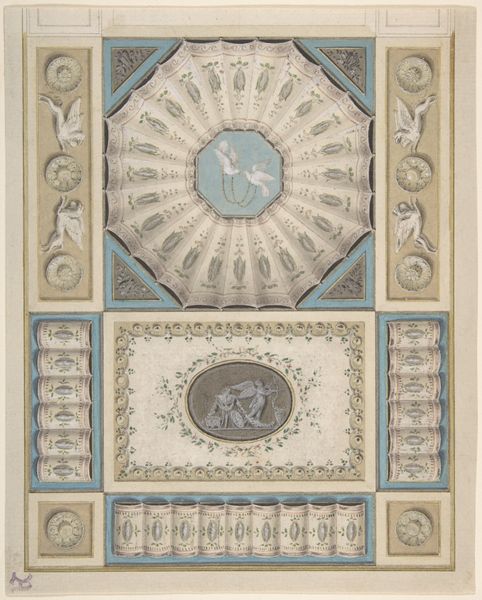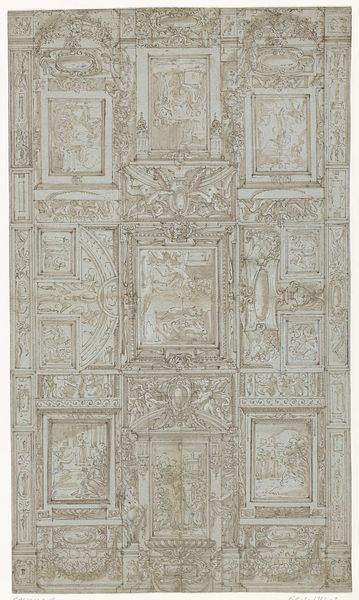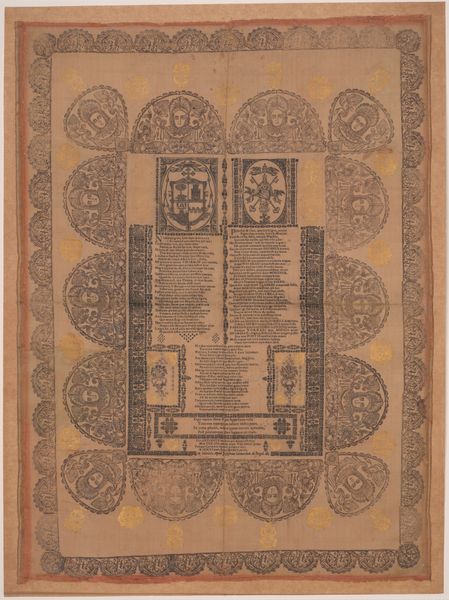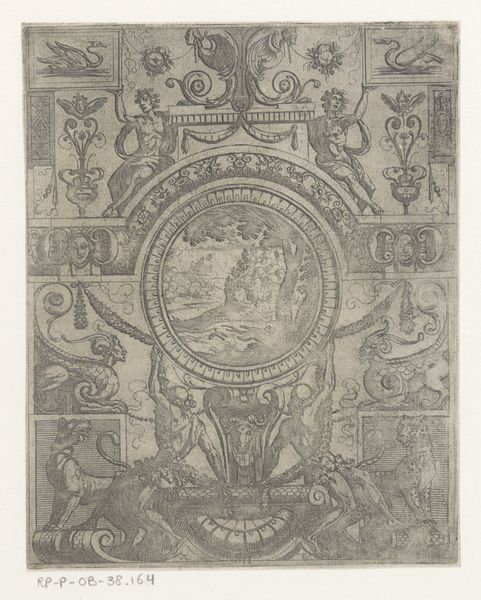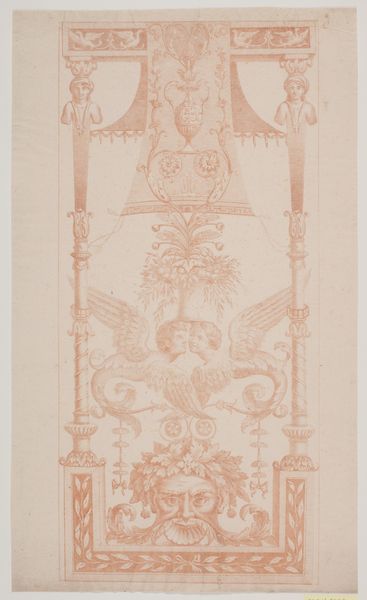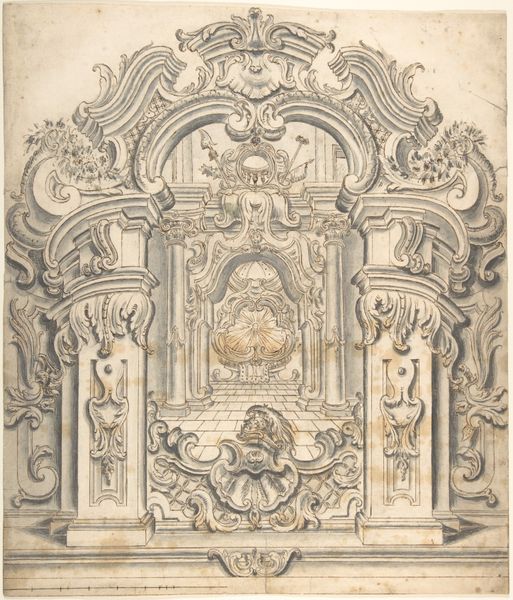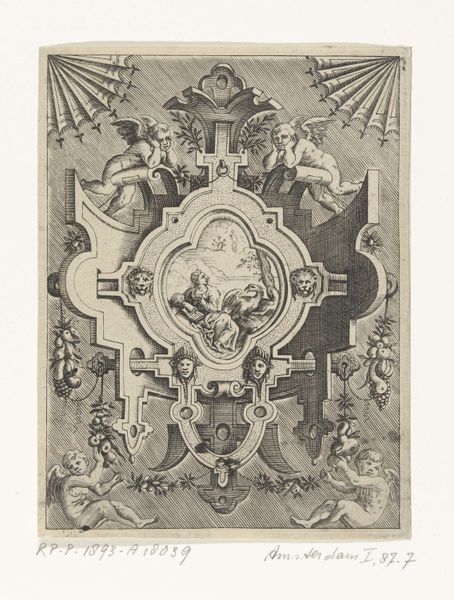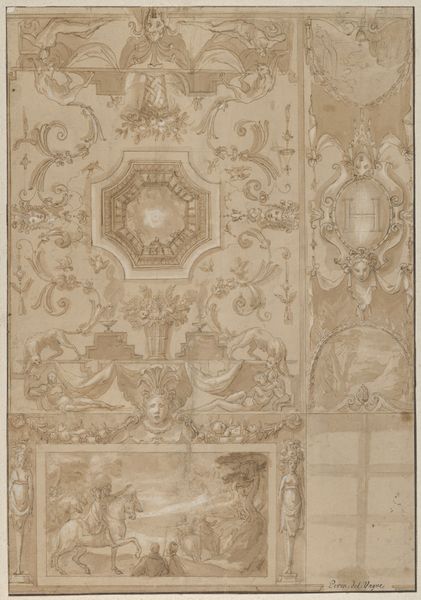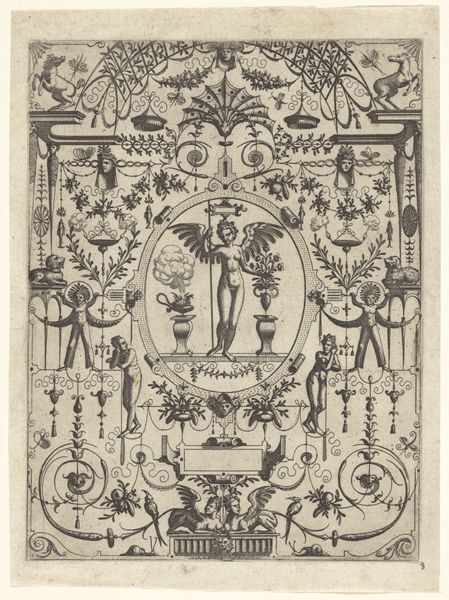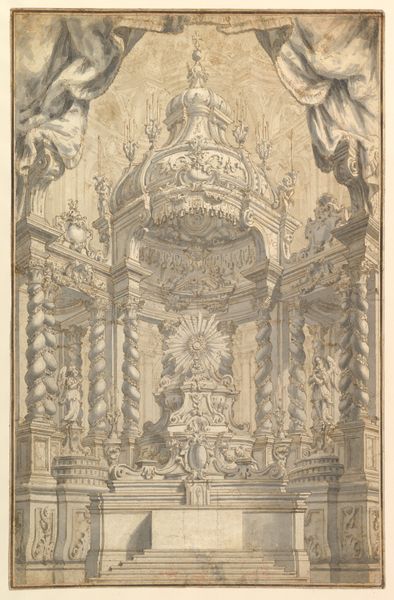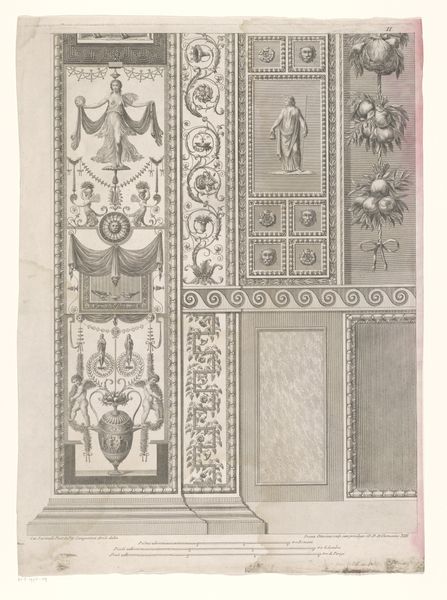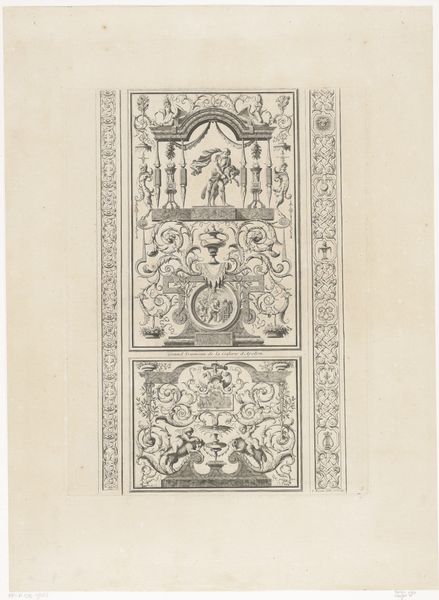
drawing, engraving
#
drawing
#
neoclacissism
#
allegory
#
pattern
#
classical-realism
#
form
#
geometric
#
line
#
history-painting
#
academic-art
#
decorative-art
#
engraving
Dimensions: height 816 mm, width 443 mm
Copyright: Rijks Museum: Open Domain
Curator: Immediately, the symmetry is striking. It's so formal, so… reserved, wouldn't you say? Editor: Precisely! And we see that rigorous order in "Design for a Decorative Panel" by Jean Démosthène Dugourc, likely conceived between 1787 and 1808. Curator: Ah, a design. So not just a pretty picture. A blueprint for some grand salon then? Those precise engravings must've been crucial. I love that this captures potential, not a fait accompli. Editor: Indeed. Notice how the artist employs allegory through carefully placed classical figures and motifs. Observe, for instance, the central figure, likely a representation of abundance, or perhaps civilization itself, enthroned upon a globe, flanked by lesser deities. Curator: Gods on globes! Talk about your worldviews. But really, it's a celebration of structure and control. Almost intimidating, but there’s a grace here, in the balance of dark and light… it invites curiosity, makes you want to trace every line. Editor: Precisely, the linear precision of Dugourc’s work typifies Neoclassical aesthetics. The very restraint in color—limited shades in this drawing, reflects the Enlightenment’s emphasis on reason. Also notice the sphinxes… quite fashionable at the time! Curator: Sphinxes, gods, and geometrical patterns… it's an entire mood board in one drawing. Knowing this would hang as a panel, informs how to experience the object and informs its Neoclassical structure, which you point out... Do you feel that structure speaks for its time? I mean... the artist's choices reflect then, no? Editor: Yes! A closer inspection also reveals a mastery of visual organization where various iconographic schemes articulate philosophical ideals of beauty, order, and historical continuity so cherished during the late 18th and early 19th centuries. And I suppose a longing for continuity amidst growing change. Curator: Well, you have made me ponder over Dugourc's design! Its cool formalism and controlled aesthetics perhaps hold keys to understanding more tumultuous historical tides than one initially suspects. Editor: A fascinating exploration into design—a reminder of how even intended "decorative" objects can yield such thought provoking encounters across the ages.
Comments
No comments
Be the first to comment and join the conversation on the ultimate creative platform.

